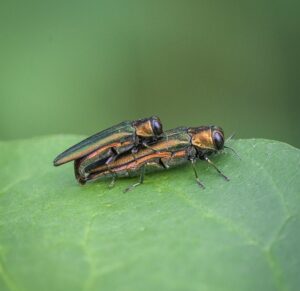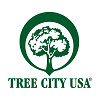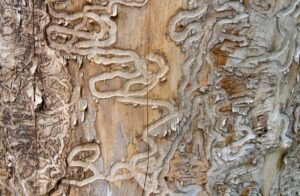Street Trees & Urban Forestry
URBAN FORESTRY
The City is committed to helping keep the area’s tree canopy healthy and strong. These efforts not only ensure cleaner air and promote a healthy ecosystem, but they boost property values and help support the economic future of the City. Investing in trees also helps the City protect local creeks and streams and enhances the aesthetic of the community’s streets and parks. Recognized as a member of Tree USA for nearly two decades, the City is dedicated to planting new trees when appropriate and believes it is important to replenish the tree canopy on a regular basis. The City does this by replacing a designated number of trees each year that are deemed no longer viable. This practice has helped the City establish a healthy, sustainable urban forestry program.
STREET TREES
Part of what makes the healthy tree canopy we all enjoy are the trees in the planter strips that line many of our improved roadways. These “Street Trees”, which are a requirement of development, may at times require replacement due to damage caused by vehicular accidents or extremes weather events. For these situations the tree lists below provide the approved species of tree for the specific location based on the width of the landscaping strip (the area between the curb and sidewalk).
APPROVED TREE LISTS
FAQ’s and Additional Information:
What can you tell me about the Emerald Ash Borer that I keep hearing about?

You may have already heard that the Emerald Ash Borer has reached the Metro area. Currently the Oregon Department of Agriculture has a temporary quarantine in effect for Washington County. If you are not familiar with the Emerald Ash Borer or the devastation it leaves in its wake, you can visit the Oregon Department of Forestry or the US Department of Agriculture which will give you a deep dive into this matter. What you need to know now is:
- It is coming and we need to be prepared.
- Pockets of infestation will develop slowly overtime
- Once the bore has “dug in” undetected there is no “coming back” and the tree will need to be removed and disposed of
- Special disposal methods have not yet determined, but the State of Oregon is working on the best ways and means to accomplish this
- Chemically treat with Systemic Insecticides BEFORE the bore arrives. Be proactive. There is a chance for “come back” if only 30% has been affected, but unfortunately we usually don’t know until past this point.
- Treatment needs to be performed by a professional pesticide control company.
- It is expected to slowly reach all ash trees (entire genius of Fraxinus/Native and other, Olea europaea/Olive, and Chionanthus virginicus/White Fringe Tree).
- Proactive treatment is the best way to save our urban forest environment.
- Although a proactive method includes tree removal it is not advised as tree removal also removes canopy cover and wildlife habitat. Tree removal also requires a tree removal permit
I was told the tree in front of my house is my responsibility. Is this true?
Yes. Street trees are required for all partitions, subdivisions, and planned unit developments in the City. It is the responsibility of the property owner to maintain and care for their respective street trees to ensure their long-term health per 16.42.030 & 16.42.040 of the Municipal Code.
The City planted a tree for me. What do I do to take care of it?
Watering
It is the responsibility of the property owner to make sure newly planted trees receive adequate water. Deep root watering is a method that slowly carries water 8 to 12 inches below ground. This technique delivers water directly to the roots of a tree instead of just wetting the surface. Deep root watering ultimately helps newly planted roots take hold and keeps trees hydrated during dry spells. In the first year, aim to deep water your tree once per week. During subsequent years, gradually space the deep watering sessions from every other week to eventually once per month.
The best time to water is in the morning. A 5-gallon bucket (the kind you can find at a home improvement store) is a good visualization for about how much water you would apply during each watering session for a newly planted tree. For larger trees (those over 8 ft), you will need to double that and give them about 10 gallons of water. You will know your tree is getting enough water to its roots if you can insert a long screwdriver into the dirt with ease.
It’s not only summer temperatures which can cause dehydration. Strong winds and overall dry conditions can also contribute. If you are aware of these weather changes ahead of time, give your tree a good preemptive soak.
It should be noted that sprinkler systems are generally not adequate enough to properly water your tree. They are primarily meant to water lawn and other vegetation that “live” in the top 3-5 inches of the soil. Tree roots live far deeper. By deep watering your trees you allow them the opportunity to develop deep root systems that promote health and stability they need.
Pruning
Appropriate pruning not only helps your tree maintain good branching architecture, but it also reduces safety hazards. It is very important to refrain from overly pruning, however, as this is actually prohibited by the City and can create a growth response that poses health risks to the tree. Please refer to Municipal Code 16.42.040 Street trees and planter strips. When in doubt, the City encourages property owners to reach out to a professional tree care expert for advice and/or assistance in carrying out this task.
Mulching
Mulch helps your tree retain water, but you need to avoid piling it too high around the tree’s trunk. Excess mulch around the trunk can build up too much moisture can lead to tree decay. When placing mulch start about 2-3 inches away from the trunk and continue outward for 1 to 2 feet. You shouldn’t need more than 1 to 2 inches of depth.
Fertilizing
Be sure to fertilize your street trees annually. If you tree is planted within turf grass that is regularly fertilized this should be adequate. If not, fertilization should come with plenty of water while the tree is actively growing and expanding. Spring and/or fall are the most appropriate times in our area to complete this task.
Does my sprinkler system provide enough water for my tree?
Probably not. Sprinkler systems are primarily meant to water lawn and other vegetation that “live” in the top 3-5 inches of the soil. Tree roots live far deeper. By deep watering your trees you allow them the opportunity to develop deep root systems that promote health and stability they need.
Do I need a permit to remove my tree?
Yes, unless tree removal is being coordinated by and replacement is being provided by the City. Please refer to the City’s tree cutting ordinance for more information.
How do I know if my tree needs replacing?
If you have a question about the health of a tree in your parking strip, shared space, or on City owned property, email the City Arborist at [email protected]. While the City’s contracted Arborist is not permitted to take any action on your property trees themselves, they may be able to help identify a concern and refer you to a reputable resource for more information. The City always recommends property owners consult with a professional arborist before removing a tree or taking other drastic action.
Which tree should I choose to replace my street tree?
The City has a comprehensive list of approved street trees. To make selection a bit easier for you this list has been broken down based on the minimum width of planter strip which will accommodate the specific tree type. These lists are as follows:
Planter strips 2.5 ft to 3.9 ft wide
Planter strips 4 ft to 4.9 ft wide
Planter strips 5 ft to 5.9 ft wide
Planter strips 6 ft to 8 ft wide
If you have a specific tree in mind and don’t see it on the list reach out to our City Arborist at [email protected] for help
REMOVAL OF LARGE TREES: Please note that if your are planning to remove a tree with a trunk diameter greater than 6 inches, you are required to obtain a permit before doing any work. Please refer to the City’s tree cutting ordinance and/or the Happy Valley Municipal Code 16.42.040 Street trees and planter strips. (qcode.us) for more information.
What should I know about trimming my street tree?
The City’s Municipal Code describes tree-trimming requirements as related to public safety concerns in the City’s rights of way. The City Code requires residents to trim trees affecting public rights of way, helping ensure that traffic safety devices (stop signs, traffic signals, vehicular and pedestrian safety, street names signs, etc.) are visible from roadways. The Code also ensures garbage trucks and other emergency service vehicles are able to safely navigate City streets. Visit 16.42.030 Landscaping standards. .
How do I take care of my trees after a storm?
When ice accumulates on tree limbs, even a slight breeze is enough force to cause limbs to come crashing down. As the ice melts, it is extremely dangerous to be under or around them as they will be prone to cave due to the unprecedented amount of weight. The City’s contracted Arborist encourages residents to be extremely careful and refrain from attempting to knock down icicles or interfere with affected branches. Instead, let the ice melt on its own and stay inside if you can. It is unpredictable as to where branches might break or where trees will split and fall. Once the inclement weather has subsided, here are some things you can do.
Inspect trees for broken branches that have detached and become tangled among other branches. If anything is touching or near a powerline, call the PGE Tree Hotline at 1-800-544-1794. Do not attempt to dislodge anything. Instead, wait until someone has inspected the tree and the area surrounding.
If no power lines are nearby, you can remove small branches by hand. If branches are larger, however, they could continue to fall as they shift. When in doubt, call a professional tree care expert or arborist to help you. Who not to hire? Many people will take advantage of an unfortunate situation and target residents following a severe weather crisis. Happy Valley does not condone door to door solicitors of any form. Please ask for references and check out credentials just as you would any other business.
Once the weather improves and damaged limbs are removed, it is wise to engage in good pruning habits. This will encourage healthy growth and increase safety. If you don’t feel confident pruning, have someone who has learned about pruning help you or hire a professional to complete this task.
 Happy Valley is proud to be a Tree City.
Happy Valley is proud to be a Tree City.
Tree City USA is an Arbor Day Foundation program that has been greening up cities and towns across America since 1976.
Emerald Ash Borer

Helpful City Links
Resources
Contacts:
Chris Randall
Public Works Director
503-783-3842
City Arborist
[email protected]